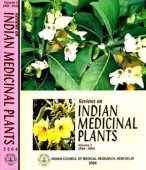Khaya: 7 definitions
Introduction:
Khaya means something in Jainism, Prakrit, Buddhism, Pali, Marathi. If you want to know the exact meaning, history, etymology or English translation of this term then check out the descriptions on this page. Add your comment or reference to a book if you want to contribute to this summary article.
In Jainism
General definition (in Jainism)
Source: SOAS Research Online: Prekṣā meditation: History and MethodsKhaya (खय) refers to “perishable”; as opposed to Akhaya—“imperishable” which refers to one of the 46 qualities of the soul to be meditated on in the “Practice of Meditation on Liberated Souls (Siddhas)”, according to Jain texts like Ācārāṅga (5.6.123-140), Ṣaṭkhaṇḍāgama (13.5.4.31) and Samayasāra (1.49).—The pure soul can be recognised by meditation on its true nature, represented by the liberated souls of the Siddhas. [...] The qualities of the soul to be meditated on as truly mine are: [e.g., My soul is imperishable (a-khaya)] [...] The meditation on such extended fourty-five qualities of the pure soul presents the niśacaya-naya, which is aligned with Kundakunda’s approach.

Jainism is an Indian religion of Dharma whose doctrine revolves around harmlessness (ahimsa) towards every living being. The two major branches (Digambara and Svetambara) of Jainism stimulate self-control (or, shramana, ‘self-reliance’) and spiritual development through a path of peace for the soul to progess to the ultimate goal.
Languages of India and abroad
Pali-English dictionary
Source: BuddhaSasana: Concise Pali-English Dictionarykhaya : (m.) waste; destruction; decay; consummation of.
Source: Sutta: The Pali Text Society's Pali-English DictionaryKhaya, (Sk. kṣaya to kṣi, kṣiṇoti & kṣiṇāti; cp. Lat. situs withering, Gr. fqiζis, fqi/nw, fqi/w wasting. See also khepeti under khipati) waste, destruction, consumption; decay, ruin, loss; of the passing away of night VvA. 52; mostly in applied meaning with ref. to the extinction of passions & such elements as condition, life, & rebirth, e.g. āsavānaṃ kh. It. 103 sq. , esp. in formula āsavānaṃ khayā anāsavaṃ cetovimuttiṃ upasampajja A. I, 107= 221=D. III, 78, 108, 132=It. 100 and passim.—rāgassa, dosassa, mohassa kh. M. I, 5; A. I, 299, cp. rāga°, dosa°, moha°, A. I, 159; dosa° S. III, 160, 191; IV, 250.—taṇhānaṃ kh. Dh. 154; saṅkhārānaṃ kh. Dh. 383; sabbamaññitānaṃ, etc. M. I, 486; āyu°, puñña° Vism. 502.—yo dukkhassa pajānāti idh’eva khayaṃ attano Sn. 626=Dh. 402; khayaṃ virāgaṃ amataṃ paṇītaṃ Sn. 225.—In exegesis of rūpassa aniccatā: rūpassa khayo vayo bhedo Dhs. 645=738=872.—See also khīṇa and the foll. cpds. s. v. : āyu°, upadhi°, upādāna°, jāti°, jīvita°, taṇha°, dukkha°, puñña°, bhava°, loka°, saṃyojana, sabbadhamma°, samudda°.

Pali is the language of the Tipiṭaka, which is the sacred canon of Theravāda Buddhism and contains much of the Buddha’s speech. Closeley related to Sanskrit, both languages are used interchangeably between religions.
Marathi-English dictionary
Source: DDSA: The Molesworth Marathi and English Dictionarykhaya (खय).—f Conceit, self-importance. v mōḍa, jirava. 2 Restiveness (as of a pampered beast).
--- OR ---
khāya (खाय).—f Preferably khāī.
Source: DDSA: The Aryabhusan school dictionary, Marathi-Englishkhaya (खय).—f Restiveness. Conceit.
Marathi is an Indo-European language having over 70 million native speakers people in (predominantly) Maharashtra India. Marathi, like many other Indo-Aryan languages, evolved from early forms of Prakrit, which itself is a subset of Sanskrit, one of the most ancient languages of the world.
Prakrit-English dictionary
Source: DDSA: Paia-sadda-mahannavo; a comprehensive Prakrit Hindi dictionary1) Khaya (खय) in the Prakrit language is related to the Sanskrit word: Kṣi.
2) Khaya (खय) also relates to the Sanskrit word: Kṣata.
3) Khaya (खय) also relates to the Sanskrit word: Khāta.
4) Khaya (खय) also relates to the Sanskrit word: Kṣaya.
5) Khāya (खाय) also relates to the Sanskrit word: Khāda.
Prakrit is an ancient language closely associated with both Pali and Sanskrit. Jain literature is often composed in this language or sub-dialects, such as the Agamas and their commentaries which are written in Ardhamagadhi and Maharashtri Prakrit. The earliest extant texts can be dated to as early as the 4th century BCE although core portions might be older.
Kannada-English dictionary
Source: Alar: Kannada-English corpusKhaya (ಖಯ):—
1) [noun] an exaggerated opinion of one’s own qualities or abilities; the quality or state of being arrogant, overbearing; conceit.
2) [noun] the quality of being too hard, not giving in or relenting; adamance.
Kannada is a Dravidian language (as opposed to the Indo-European language family) mainly spoken in the southwestern region of India.
See also (Relevant definitions)
Starts with (+18): Khaya anthotheca, Khaya grandifoliola, Khaya ivorensis, Khaya madagascariensis, Khaya nyasica, Khaya senegalensis, Khaya Sutta, Khayadhamma, Khayadhovayu, Khayah-i-iblis, Khayahe-i-iblis, Khayahe-iblis, Khayakhaya, Khayakhodi, Khayal, Khayala, Khayalati, Khayali, Khayam, Khayamgutta.
Ends with (+54): Abhimukhaya, Akhaya, Akkhaya, Asamkhaya, Asavakkhaya, Asukhaya, Ayukhaya, Ayukkhaya, Ayusankhaya, Bakhaya, Bhikkhaya, Biravana-parikhaya, Dekhkhaya, Dhanakkhaya, Dosakkhaya, Duhkhaya, Dukkhakkhaya, Hasakkhaya, Inkhaya, Izilakhaya.
Full-text (+214): Oganwo, Ogwango, Krala, African mahogany, Red mahogany, Ono, Mangona, Gedu, Dubini, Acajou d'afrique, Nofuwa, Dry-zone mahogany, Odala, Acajou blanc, Dukuma, Benin wood, Bisselon, Khaya anthotheca, Acajou de bassam, West african mahogany.
Relevant text
Search found 16 books and stories containing Khaya, Khāya; (plurals include: Khayas, Khāyas). You can also click to the full overview containing English textual excerpts. Below are direct links for the most relevant articles:
Chaitanya Bhagavata (by Bhumipati Dāsa)
Verse 2.8.42 < [Chapter 8 - The Manifestation of Opulences]
Verse 1.4.114 < [Chapter 4 - Name-giving Ceremony, Childhood Pastimes, and Thieves Kidnap the Lord]
Verse 2.8.292 < [Chapter 8 - The Manifestation of Opulences]
Transcendental Dependent Arising (by Bhikkhu Bodhi)
Part 11 - The Knowledge Of Destruction < [Part 2 - An Exposition Of The Upanisa Sutta]
The Doctrine of Paticcasamuppada (by U Than Daing)
Dhammapada (Illustrated) (by Ven. Weagoda Sarada Maha Thero)
Verse 383 - The Story of the Brāhmin who had Great Faith < [Chapter 26 - Brāhmaṇa Vagga (The Brāhmaṇa)]
Verse 153-154 - Venerable Ānanda’s Stanzas < [Chapter 11 - Jarā Vagga (Old Age)]
Vinaya Pitaka (3): Khandhaka (by I. B. Horner)
Requesting the recitation of the Pātimokkha < [19. Suspending the Observance (Uposathaṭṭhāpana)]
A Manual of Abhidhamma (by Nārada Thera)
Introduction < [Chapter VI - Analysis of Matter]
Related products
